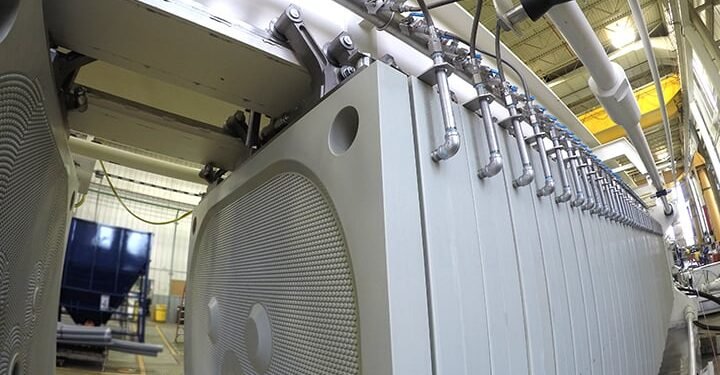In industrial processes, managing wastewater and sludge effectively is essential for maintaining operational efficiency and environmental sustainability. Over the years, industrial dewatering technologies have undergone significant evolution, driven by the need for more efficient and sustainable solutions. Amidst this evolution, mechanical dewatering has emerged as a cornerstone technology, offering reliable and cost-effective methods for separating solids from liquids in various industrial applications.
Mechanical dewatering, which involves the application of mechanical force to remove water from sludge or wastewater, has played a pivotal role in advancing industrial dewatering technologies. This method encompasses a range of equipment and processes, including belt filter presses, centrifuges, and screw presses, each tailored to specific applications and operating conditions.
Key Takeaways
- Understanding the dewatering process and its significance in industry.
- Reviewing the technological advancements that have transformed dewatering practices.
- Evaluating the environmental impacts and considerations of industrial dewatering.
Table of Contents:
- Understanding Dewatering and Its Industrial Application
- Technological Advances in Dewatering Equipment
- Environmental Considerations in Dewatering Practices
- Dewatering in the Mining Industry
- Dewatering in Construction and Infrastructure Projects
- Selecting the Right Dewatering Method for Your Industry
Understanding Dewatering and Its Industrial Application
Several variables, including project-specific technical requirements, environmental concerns, and legal constraints, impact the justification for industrial dewatering. It is essential to comprehend these motivating factors to choose the best dewatering technique. Whether it’s maintaining the structural integrity of a construction pit or extracting valuable minerals from a mine, dewatering provides the means to manage water effectively to ensure the smooth running of operations.
Technological Advances in Dewatering Equipment
The shift from labor-intensive to automated dewatering methodologies is one of the landmarks of industrial evolution. Where once an extensive workforce was required, machines like filter presses and centrifuges now accomplish the job rapidly and with a higher degree of precision. These technical developments allow industries to scale operations and manage larger volumes of materials, translating to enhanced productivity and reduced labor costs.
Environmental Considerations in Dewatering Practices
An increased focus on environmental sustainability has led to the refinement of dewatering techniques that align with conservation goals. This attention to the environmental impact of dewatering reflects a broader industry trend towards sustainable practices. It includes measures to protect local ecosystems, treat discharged water, and use resources more efficiently. Organizations must navigate these considerations, balancing cost with regulatory compliance and ethical responsibility.
Dewatering in the Mining Industry
One of the most water-intensive industries, mining faces the challenge of managing large quantities of water. Dewatering in this sector is complex, with strategies needed to address the varying conditions found in each location. Aiming to protect equipment, ensure worker safety, and comply with environmental standards, the mining industry continually adapts its dewatering practices in line with technological advances and regulatory changes.
Dewatering in Construction and Infrastructure Projects
Water management through dewatering is critical in construction and infrastructure projects, particularly in projects with significant subsurface components like tunnels or deep foundations. The presence of groundwater or flooding can undermine stability, slow down progress, and increase project costs. Hence, well-planned dewatering strategies are vital to mitigate these risks and ensure timely and successful project completion.
Selecting the Right Dewatering Method for Your Industry
Choosing the right dewatering approach is a nuanced decision that involves understanding the specific conditions and requirements of the operation. It is a decision that should be made in consultation with experts who can offer tailored advice, weighing factors such as the nature of the materials, project scale, environmental considerations, and budget constraints. Aligning with experienced professionals and leveraging their insights can lead to effective, cost-efficient, and dewatering strategies, paving the way for better project outcomes. Read more interesting articles on Ebeak


















